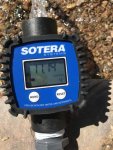My softener is a two stage elimination system - a granular activates carbon tank inline with a 54k grain softener tank. So the GAC tank takes care of chlorine/chloramine/VOCs and the softener removes calcium. The softener water tastes fine to me and my household and there is no health risk to drinking softened water unless you happen to have renal disease and no one here does. The only difference between softened water and unsoftened water is no calcium/magnesium and an increase in sodium. Chloride increase is minimal. RO water, if it’s functioning properly, will have no metal ions or anions (chloride, carbonate, etc) in it. Polishing tanks add back a small amount of hardness and alkalinity as RO water tends to be mildly acidic and would, in and of itself, damage plumbing over time.
RO waste water is going to have higher concentrations of all ionic species in it. I would not use it for irrigation purposes as it would, overtime, increase soil sodicity and thus lead to osmotic stress on the root system and rhizosphere. In a region where rainfall is plentiful, that’s not much of a concern but in an arid climate such as mine, using brine discharge or RO waste water would be toxic to the soil.
i didn't see a carbon filter in your setup, is it integrated with the resin bed? If you are stripping Cl out before your house plumbing, be aware you can grow some funky stuff in places like your water heater.
Concentrations in spent wastewater from RO would be minimal and unlikely to impact plants more than normal tap water.















 ). He normally only works with “A”-List customers so, since I’m a “D”-List’er at best, he only agreed to do my pool if I promised to polish his exhaust pipes ...
). He normally only works with “A”-List customers so, since I’m a “D”-List’er at best, he only agreed to do my pool if I promised to polish his exhaust pipes ... 
 Why did you have it plumbed to only the hot water? The cold water (yeah, like we have “cold” water here! )will still cause scale build up. I mean besides the kitchen sink for drinking water purposes, (if you drink the water here you’re nuts anyway) everything else besides your front hose bib should be soft water.
Why did you have it plumbed to only the hot water? The cold water (yeah, like we have “cold” water here! )will still cause scale build up. I mean besides the kitchen sink for drinking water purposes, (if you drink the water here you’re nuts anyway) everything else besides your front hose bib should be soft water.